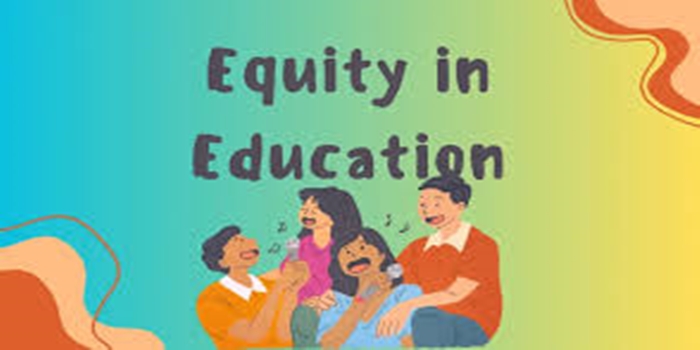In this article, we discussed the meaning of equity in education, the features, the importance, and we also talked about the examples.
Definition
Equity in education means providing all students with the resources and support they need to reach their full potential, regardless of their background or circumstances. It’s about addressing individual needs to ensure fair opportunities for success, rather than simply treating everyone the same. This involves ensuring equitable access to quality learning, inclusive environments, and culturally responsive teaching.
The Features of Equity in Education:
- Fairness and Access:
Equity ensures all students have fair access to quality education, regardless of their background or circumstances.
This includes providing equitable access to resources, technology, and qualified teachers.
It means addressing systemic biases and barriers that hinder certain groups of students from accessing education.
- Addressing Opportunity Gaps:
Equity focuses on identifying and addressing opportunity gaps that exist between different groups of students.
This can involve providing targeted support, interventions, and resources to students who may be lagging behind.
It also means ensuring that all students have the opportunity to reach their full potential, regardless of their background.
- Differentiated Instruction:
Equity requires educators to differentiate instruction to meet the diverse needs of all learners.
This means providing varied learning experiences, assessments, and support to ensure all students can engage and succeed.
It also means creating a learning environment that is inclusive and respectful of all students’ identities and experiences.
- Inclusive Practices:
Equity encompasses creating inclusive classrooms where all students feel valued, respected, and supported.
This means fostering a sense of belonging and community where students can learn from one another.
It also means addressing biases and stereotypes that may be present in the curriculum or classroom environment.
- Equity-Minded Professional Learning:
Equity requires educators to engage in ongoing professional development that focuses on equity and inclusion.
This can include learning about diverse learning styles, culturally responsive teaching practices, and strategies for addressing bias.
It also means creating a school culture that values equity and diversity.
- Data-Driven Decision Making:
Equity is often guided by data that reveals achievement gaps and other disparities among students.
This data can help schools and educators identify areas where they need to focus their efforts to improve equity.
It also allows for data-driven decision-making about resource allocation and program implementation.
Equity in Education is Important:
Fairness and Justice:
Equity in education is about ensuring that all students have a fair chance to succeed, regardless of their socioeconomic status, race, ability, or language background. It recognizes that students may not all start from the same place and requires adjustments to imbalances to ensure equitable opportunities.
Breaking Cycles of Poverty:
Access to quality education can break cycles of poverty and inequality, providing individuals with the skills and knowledge they need to improve their lives and contribute to society.
Social and Emotional Development:
Equitable learning environments foster a sense of belonging and support, which is crucial for students’ social and emotional development.
Preparing Students for the Future:
By embracing diversity and inclusivity, equitable education prepares students for a future that values difference and fosters a just and inclusive society.
Addressing Achievement Gaps:
Equity in education helps to close the achievement gap between different groups of students, ensuring that all learners have the opportunity to thrive.
Meeting the Needs of Diverse Learners:
Equitable systems recognize that students have different needs and learning styles, and provide them with the support and resources they need to succeed.
Empowering Educators:
By implementing equitable practices, schools can empower educators to create inclusive and supportive learning environments where all students can thrive.
Alignment with Sustainable Development Goals:
Equity in education is a key component of the Sustainable Development Goals, particularly Goal 4, which aims to ensure inclusive and equitable quality education.
The Examples of Equity in Education:
Offering different learning materials: to students with different learning styles, such as providing audiobooks or videos for students who struggle with reading.
Providing extended time or accommodations: for students who need it on standardized tests.
Implementing culturally responsive teaching practices: that acknowledge and incorporate students’ diverse cultural backgrounds and experiences.
Addressing barriers to learning: such as lack of access to food, clothing, or school supplies.
Implementing flexible seating: to accommodate students with sensory or attention needs.
Using technology thoughtfully: to ensure equitable access to the internet and resources, considering factors like home internet access and physical and cognitive abilities.
Ensuring that students from all backgrounds receive nutritious meals through initiatives like the Mid-Day Meal Scheme.
Providing access to tutoring or other supplemental resources: for students who are struggling in specific subjects.
Creating a supportive and inclusive learning environment: where all students feel valued and respected.
Conclusion
Equality in education means providing all students with the same resources and opportunities, regardless of their individual differences. Although this one-size-fits-all approach may sound fair in theory, in practice it is not.
READ: Multilingual Education


